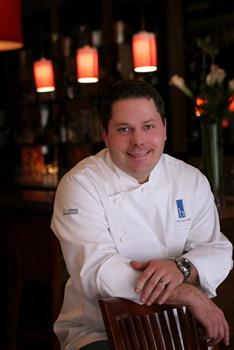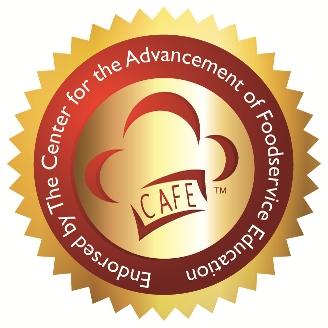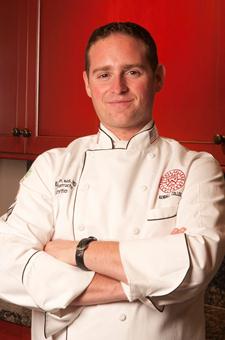 Sullivan University’s National Center for Hospitality Studies (NCHS) honored Chef Colby Garrelts of bluestem Restaurant in Kansas City with the prestigious Distinguished Visiting Chef award on November 10. As recipient of the award, Garrelts presented on-campus cooking demonstrations, book signings and question-and-answer sessions held exclusively for Sullivan University students.
Sullivan University’s National Center for Hospitality Studies (NCHS) honored Chef Colby Garrelts of bluestem Restaurant in Kansas City with the prestigious Distinguished Visiting Chef award on November 10. As recipient of the award, Garrelts presented on-campus cooking demonstrations, book signings and question-and-answer sessions held exclusively for Sullivan University students.
Designed to connect today’s aspiring culinarians with industry leaders, The Distinguished Visiting Chef Series has been recognizing three top chefs annually since its inception in 1988. Garrelts is the 41st recipient of the award, joining an impressive roster of chefs that includes Bob Kinkead, Emeril Lagasse, Louis Osteen, Rick Tramonto and Marcel Desaulniers.
Garrelts, who has been nominated several times for Best Chef Midwest by the James Beard Foundation and was named by Food & Wine magazine as one of the Top 10 Best New Chefs in 2005, obtained his culinary education in kitchens across the country. A native of Kansas City, Garrelts cooked at two prestigious private clubs, the famed American Restaurant, and the legendary Stolen Grill while attending culinary school. He developed a taste for big-city cuisine, small-business acumen and the aspiration to see what culinary experiences he could acquire in larger cities. With all of this on his mind, Garrelts moved to Chicago in 1999, where he became the senior sous chef at the five-star, five-diamond restaurant TRU under nationally acclaimed chefs Rick Tramanto and Gale Gand. At TRU, Garrelts honed his technical skills, developed his culinary style and met his future wife/partner Megan Schultz.
 The best advantage of field trips is the range of learning that students acquire. Here are tips for maximizing their benefits.
The best advantage of field trips is the range of learning that students acquire. Here are tips for maximizing their benefits.
 Your students will want to reach for the tongs, spatula or spoon. Don’t let them. These six steps in class will effectively remove students’ fear—and enhance their thrill—of sautéing.
Your students will want to reach for the tongs, spatula or spoon. Don’t let them. These six steps in class will effectively remove students’ fear—and enhance their thrill—of sautéing. An overview of soy oil and its role in foodservice applications.
An overview of soy oil and its role in foodservice applications. The Center for the Advancement of Foodservice Education (CAFÉ) is pleased to award its Endorsement Program seal to the Idaho Potato Commission (IPC) Foodservice Toolkit, a comprehensive teaching resource.
The Center for the Advancement of Foodservice Education (CAFÉ) is pleased to award its Endorsement Program seal to the Idaho Potato Commission (IPC) Foodservice Toolkit, a comprehensive teaching resource. The Kendall College School of Culinary Arts announces the addition of Chef Eric Stein, MS, RD, to its faculty. As an instructor specializing in culinary nutrition, Stein brings a contemporary cooking style to Kendall that emphasizes nutrient-rich foods and global flavor profiles.
The Kendall College School of Culinary Arts announces the addition of Chef Eric Stein, MS, RD, to its faculty. As an instructor specializing in culinary nutrition, Stein brings a contemporary cooking style to Kendall that emphasizes nutrient-rich foods and global flavor profiles. Sullivan University’s National Center for Hospitality Studies (NCHS) honored Chef Colby Garrelts of bluestem Restaurant in Kansas City with the prestigious Distinguished Visiting Chef award on November 10. As recipient of the award, Garrelts presented on-campus cooking demonstrations, book signings and question-and-answer sessions held exclusively for Sullivan University students.
Sullivan University’s National Center for Hospitality Studies (NCHS) honored Chef Colby Garrelts of bluestem Restaurant in Kansas City with the prestigious Distinguished Visiting Chef award on November 10. As recipient of the award, Garrelts presented on-campus cooking demonstrations, book signings and question-and-answer sessions held exclusively for Sullivan University students.